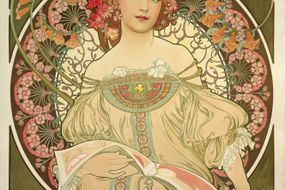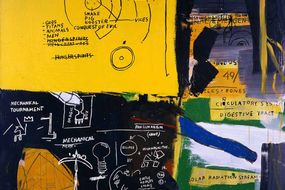From 24 November to 3 December 2023
On the occasion of the third edition of the Milan Drawing Week (from 25 to 3 December 2023), conceived by the Ramo Collection and dedicated to the comparison between modern and contemporary drawing, this exhibition presents Boccioni's masterpieces to the public which have never been so juxtaposed since they were created. came out of the artist's studio.
The collection of the Cabinet of Drawings of the Castello Sforzesco in Milan contains sixty-one works on paper by Umberto Boccioni created between 1906 and 1916. From this corpus of works emerge all the stages of the stylistic path of one of the most important Italian artists of the last century and international. The exhibition investigates the Divisionist phase and the initial moment of the Futurist transition up to 1912, comparing for the first time contemporary drawings belonging to the Milanese Ramo Collection and civic collections. Masterpieces placed side by side here as in the artist's studio ready to reveal themselves in the intensity of that sign that generated the Futurist revolution. This meeting between two Milanese collections focuses on these themes: the portrait of a female figure indoors and the urban landscape that is rapidly industrializing.
Regarding the female portrait, of extraordinary importance for the artist himself was Controluce which describes a young woman in the background of a city suburb, whose face is irradiated by a shower of light coming from the window behind it. This design, as well as deriving from the idea of fusion of the figure with the surrounding environment, already pursued by the revolutionary research of Medardo Rosso, indicates the way for the decisive futurist turning point centered on the interpenetration of planes and on the effects of optical transparency that Boccioni will shortly after developing. The still filamentous line of pointillist derivation found in previous compositions such as La Signora Sacchi of 1907 and The mother who reads and The mother (1911) is then completely overcome by a new decidedly futurist style expressed in the two drawings (one from the Ramo collection and one of the Civic Collections of Milan with the homonymous title: The mother sitting with her hands crossed. The protagonist of these two drawings is once again the figure of the mother, central in the development of Boccioni's style, interpreted according to the interpenetration of the window frame in the head that seems to echo the "Technical Manifesto of Futurist Painting" of 1910 which declares the need to reproduce the atmosphere that envelops a figure, not the figure alone. These drawings, placed side by side for the first time in an exhibition, will then lead to the painting Materia, in which the mother is no longer three-quarters but in front and the interpenetration will be complicated with the solidification of the beams of light and the entrance of the houses and the street from behind.
Regarding the theme of the industrial outskirts of Milan, the sketch for the painting Crepuscolo describes Via Isonzo seen from Via Adige where the artist lived and where he created the aforementioned portraits. The presence of a steamroller on the left, of an electric pylon, of distant chimneys, describes the moment of transformation of the still countryside area in the process of being covered with buildings and carriage roads.
In the small study for The Rising City (the painting of the same name at the Museum of Modern Art in New York presents a compositional solution that was then resolved in a different way from this sketch) in the foreground stands the horse with the workers, and the dynamism of the advanced becomes the absolute protagonist against the backdrop of smoking chimneys.
Peculiar to this stylistic period is the writing down on the paper the names of the colors and luminous effects that he would have created. In fact, the same way of reasoning is found in the study for The Sister on the Balcony where, in correspondence with some areas of the future painting, Boccioni had noted the effect of chiaroscuro both with the initials 'ch' and with the ink hatching.
In these years characterizing the transition from a still pointillist phase, linked to the Milanese attendance of Gaetano Previati and the Roman one of the first Balla, the creative reasoning on paper before on canvas is undoubtedly central, even with drawings of independent value as well as sketches. The use of color as an optical instrument and the fusion of the subject with the surrounding environment in the luminous atmosphere (which is accompanied by particular attention to the psychological aspect, typical of the pre-futurist period) unite the drawings on display, essential for the maturation artistic work by Boccioni.

Piazza Castello, Milan, Italy
Opening hours
| opens - closes | last entry | |
| monday | Closed now | |
| tuesday | Closed now | |
| wednesday | Closed now | |
| thursday | Closed now | |
| friday | Closed now | |
| saturday | Closed now | |
| sunday | Closed now |

From 8 October to 8 March 2026
ALPHONSE MUCHA

Palazzo Bonaparte - Generali Value Culture Space, Rome

From 26 May to 31 December 2025
From the 1960s to the beginning of the 21st century

Roberto Casamonti Collection, Florence

Artsupp Card: museum + exhibitions 10.00 €